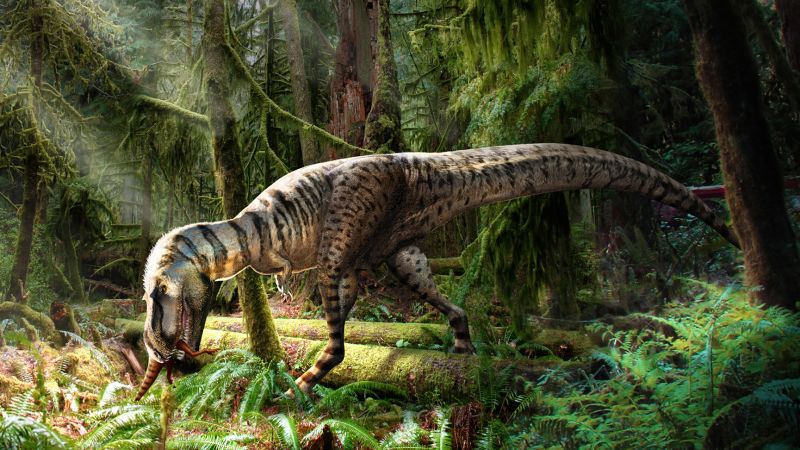A new analysis of fossils believed to be juveniles of T. rex now shows they were adults of a small tyrannosaur, with narrower jaws, longer legs, and bigger arms than T. rex. The species, Nanotyrannus lancensis, was first named decades ago but later reinterpreted as a young T. rex.

The first skull of Nanotyrannus was found in Montana in 1942, but for decades, paleontologists have gone back and forth on whether it was a separate species, or simply a juvenile of the much larger T. rex.

Measuring the growth rings in Nanotyrannus bones, the researchers showed that they became more closely packed towards the outside of the bone as growth was slowing. It suggests these animals were nearly full size; not fast-growing juveniles.
Modeling the growth of the fossils showed that the animals would have reached a maximum of around 900–1,500 kilograms and five meters—about 15% of the size of the giant T. rex, which grew to 8,000 kilograms and nine meters or more.

“When I saw these results I was pretty blown away,” said Longrich. “I didn’t expect it to be quite so conclusive. If they were young T. rex they should be growing like crazy, putting on hundreds of kilograms a year, but we’re not seeing that. We tried modeling the data in a lot of different ways and we kept getting low growth rates. This is looking like the end for the hypothesis that these animals are young T. rex.”

But that raises a mystery—if Nanotyrannus isn’t a juvenile Tyrannosaurus, then why hasn’t anyone ever found a young T. rex?

That young T. rex is represented by a skull bone—the frontal bone—with distinctive features that ally it with Tyrannosaurus, but which aren’t seen in Nanotyrannus. It comes from a small animal, one with a skull about 45 cm long and a body length of around 5 meters.
![]()
“The arms are actually longer than those of T. rex. Even the biggest T. rex, has shorter arms and smaller claws than in these little Nanotyrannus. This was an animal where the arms were actually pretty formidable weapons. It’s really just a completely different animal—small, fast, agile. T. rex relied on size and strength, but this animal relied on speed.”

The long arms and other features suggest it was only distantly related to T. rex—and may have sat outside the family Tyrannosauridae, which T. rex is part of, in its own family of predatory dinosaurs.
The new study is the latest in a series of publications on the problem, going back decades.